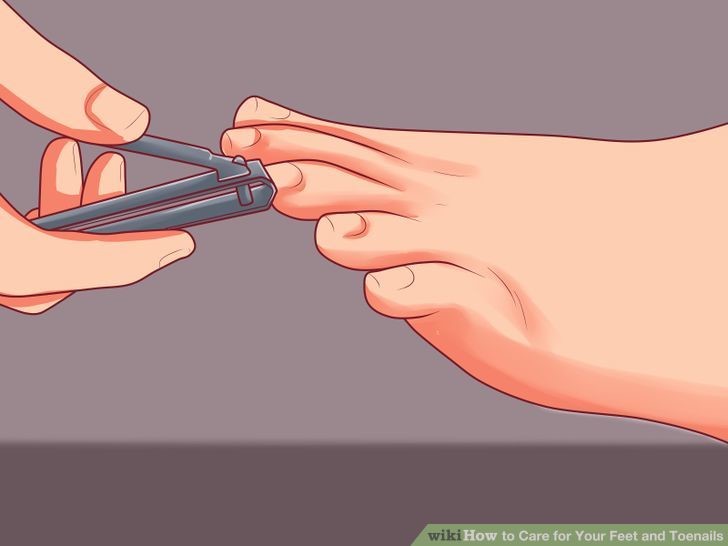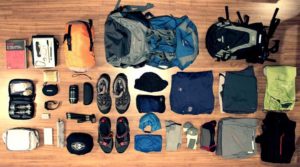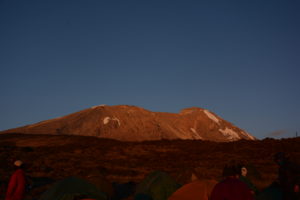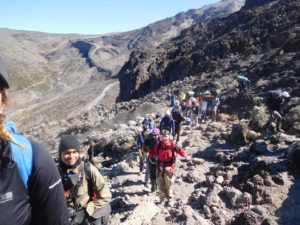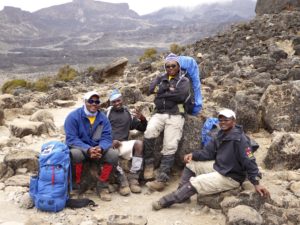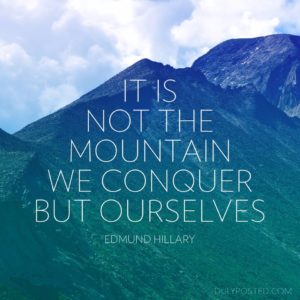18 December 20161) Bring Snacks!
This might seem superfluous but snacks became very important on our climb by boosting the moral. Don’t do what I did and assume you will be fine without them because some days I would of killed for a different taste in my mouth other than dirty water. If you do forget, like I did, select your walking companion wisely ( shout out to Jade who let me share her strawberry Haribo, it was a god send!). Hard candies were generally a better choice because they were more durable on the mountain and also, some groups will not allow nut based snacks in case of severe allergies other climbers may have, so remember to check!
2) Cut Your Toenails
Again, maybe this is not advice you would expect but it can cause serious problems if you forget. When you are walking downhill for hours on end there is constant pressure on the tips of your toes. Imagine your toenail continuously hitting into the front of your hard trekking boot. One of my friends, on the trek, lost her two big toenails over a painful 8 day days. So if you don’t want to say goodbye to any of your toenails make sure you cut them, it’s the best way to prevent it.3) Don’t feel like you have to buy expensive gear
This was a personal lesson I learnt. When your contemplating taking on an activity that is so physically demanding its important to buy good gear to make the trek as easy as possible. Often we associate good gear being relative to the money we spend and this can lead to a long list of expensive equipment that we wonder how we are going to pay for. Trekking equipment can be incredibly expensive but I am here to ease your worries! You do not need to buy that £200 North Face jacket or spend £150 on Meindl trekking boots. Although if you can afford to buy these products there is nothing wrong with purchasing them, they are both very good quality brands, but its simply not necessary.My Regatta waterproof jacket, Wag Han boots (which were so kind to my feet) and socks, came under £130. All of which were bought on sale at Cotswold Outdoors, do not be afraid of sale items, you can get some amazing deals. Also if you are climbing as part of a registered charity, the store may reduce the price of some items. My thermals, fleeces and thick leggings were all bought cheaply on amazon. The one thing I would suggest paying the price for is socks. Good quality socks will get you up and down the mountain and are absolutely essential. I bought Bridgedale socks which kept my feet in good condition, its also handy to buy light, medium and heavy socks dependent on the temperature of the day.If you have any doubts or concerns when buying gear, don’t hesitate to ask the professionals in any outdoor shop. Most have bags of experience and will help direct you to the right choices.4) To bring my go-pro/ SLR or to not?
A lot of people suffered with this dilemma before the trek but the resounding answer was, definitely bring it with you. Remember this is a once in a life time experience, with once in a lifetime views and experiences. I personally took amazing photos of my surroundings with my Nikon SLR, that take me back to the trek every time I look at them. The only regrets fellow trekkers had was not taking enough batteries, so make sure to bring fully charged back-up batteries. If your main concern is damage, like mine was, waste no time insuring your equipment. I managed to find cheap item insurance up to £1000 from Asda Money and it really eased my mind when using my camera.5) Look Around
During the trek you are often so concentrated on getting to the campsite each day that you forget to open your eyes. Each day you travel through a different environment, especially if you trek Machame route, so take in every change and appreciate the beauty of the mountain.6) Talk to the Guides and Porters
Climbing Kilimanjaro is not only about challenging yourself physically but about immersing yourself in a different culture. Your guides have an affluent knowledge of the wildlife, flora and rock formation of Kilimanjaro, so use it as a chance to learn more about the mountain your climbing. Both the guides and porters also have a lot of interesting stories about their life, culture and political atmosphere of Tanzania, which was incredible humbling listening to.7) Positivity
Everyone who starts the climb wants to reach Uhuru peak but only positivity will get you there. When people describe the climb as more of a mental challenge at times than a physically one, its true. Constantly tell yourself, you can do it and you will. But after saying that, I must admit that its not always about reaching the peak. Some of my group didn’t make it to Uhuru peak but all of them were close. Unfortunately you may be suffer severely from altitude sickness or other problems that inhibit you from getting there. Don’t feel disheartened if you don’t make it to the top. Not being able to climb for 1 day out of 6 is not failing, you have still succeeded. So positivity again comes in handy, feel proud that you achieved all you did.
I hope these come in handy to future trekkers and provide nostalgia for previous ones. If you have more to add to this list please contribute and comment!
Want to hear about some adventures closer to home? Take a look at how I tackled the UK’s oldest path.


